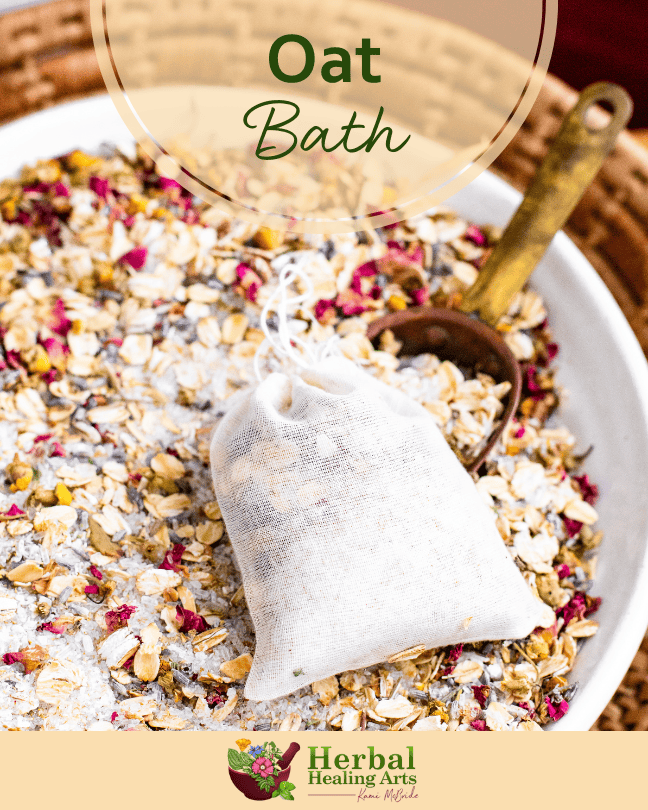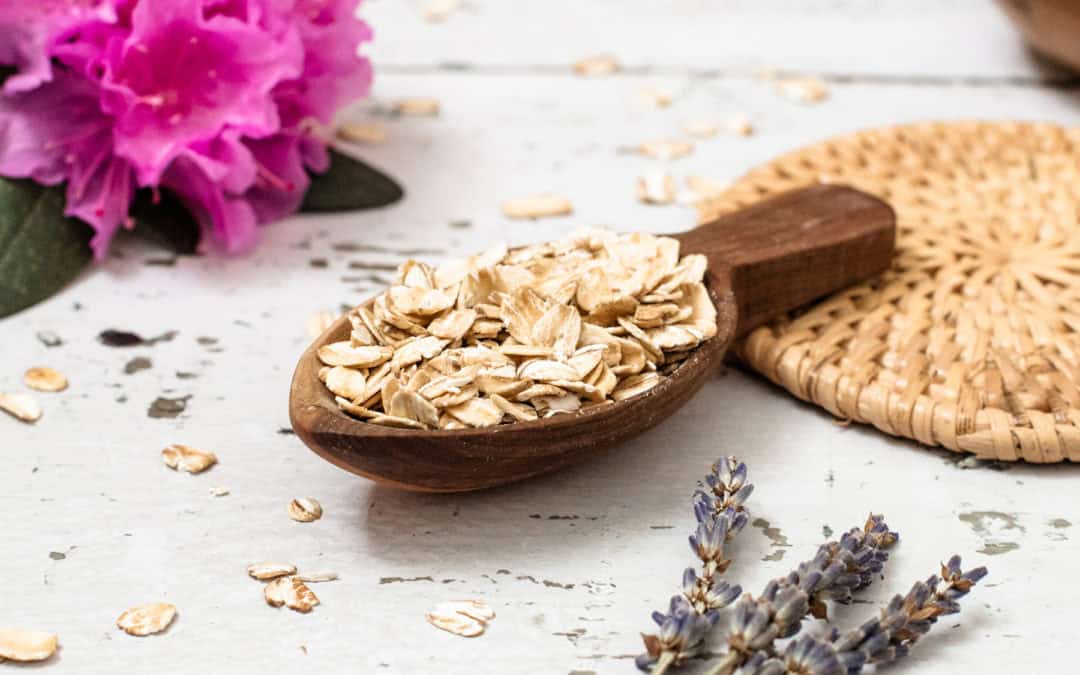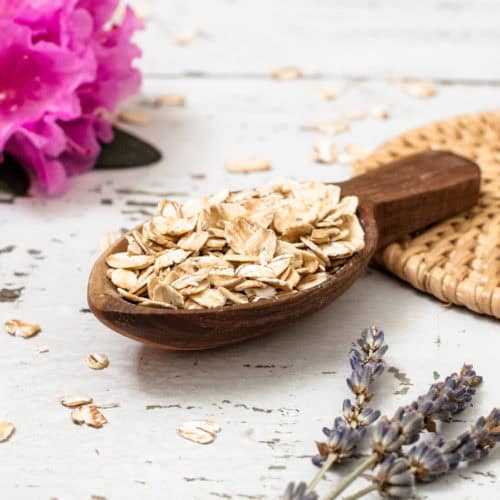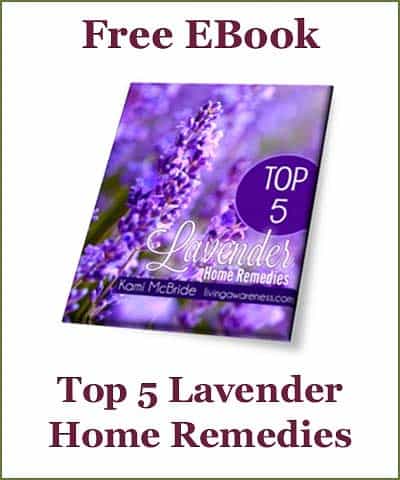Itchy skin can be incredibly bothersome, and it can happen at any time—whether from:
- Bug bites
- Poison oak or poison ivy
- Dry or hot climate
- Dry skin
- Dehydration
- Anxiety
One thing many people don’t realize is that a key ingredient for relief might be as close as your kitchen pantry.
Of course, with a holistic health perspective, we always want to look at addressing the root cause of the itchy skin. This way, we use the oat baths as part of an overall approach to not only treating the acute itchiness, but what helped contribute to the itchiness in the first place.
Having a home remedy that can help soothe the acute itchy skin is such a relief. Oat baths can soothe dry or irritated skin, and this historic practice has withstood the test of time for a reason.
“Oats have anti-inflammatory and moisturizing properties, making them great for your skin!”
I’ll share how to make an oat bath and some helpful herbs you can add to the water for extra support. This technique will also make sure your tub stays nice and clean, without any oats or herbs clogging your drain!
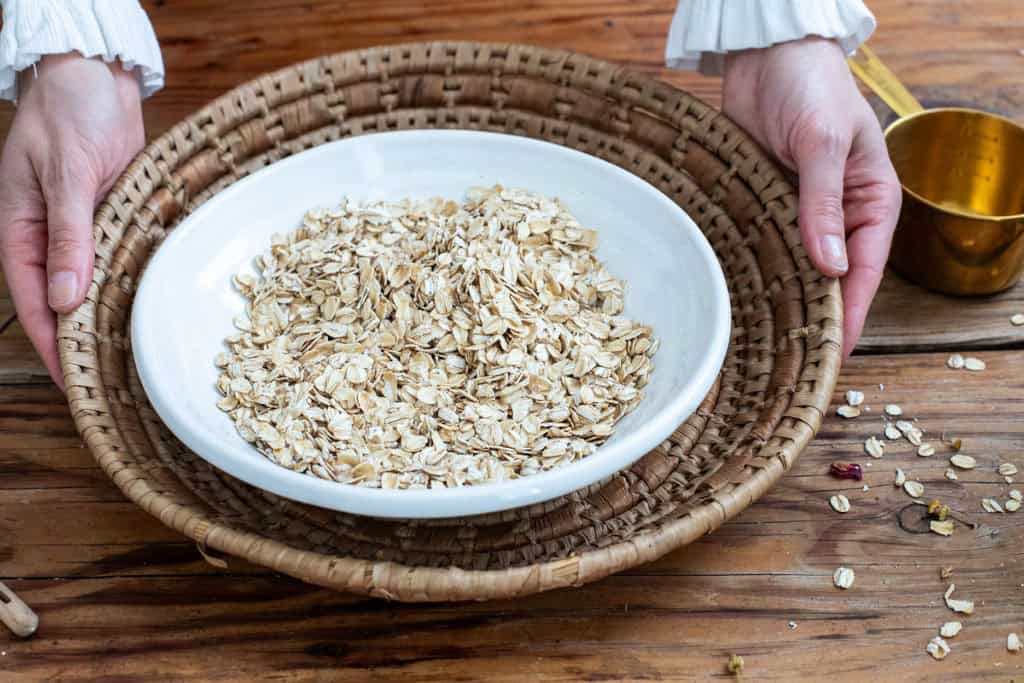
What is an Oat Bath?
An oat bath is a natural skincare remedy where ground oats are added to warm bathwater. As oats disperse in the water, they create a milky solution that moisturizes and hydrates your skin. Used for many generations, they can help with conditions such as:
- Eczema
- Dermatitis
- Sunburn
- Mild scratches
- Itchy skin and rashes
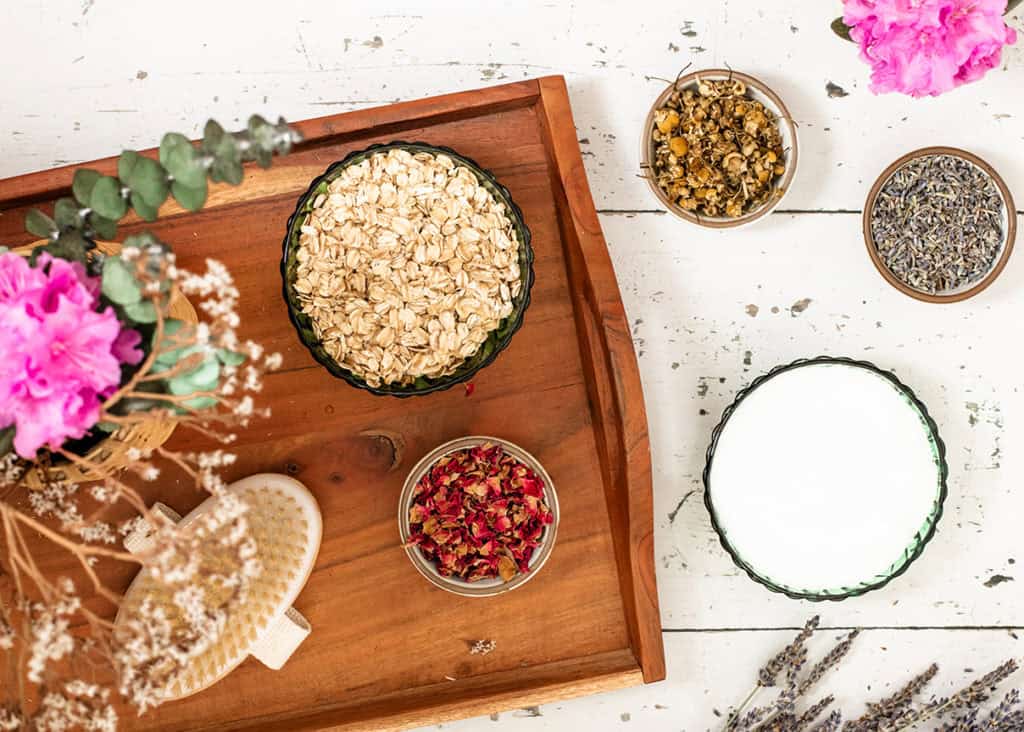
The History of Oat Baths
When I was a child, we had an old-fashioned family doctor. No big medical facility, he was the town doctor that birthed babies and knew everyone. I grew up on a creek and pretty much ran feral every afternoon and evening, with the main limitation of being home by dark. The creek was full of poison oak and nettles. I remember one time having a serious case of poison oak and he prescribed oatmeal baths!
This tradition dates back centuries, with the first record of using oatmeal in skincare dating back to 2000 BC in Arabia and Egypt. It’s said that the Romans also used oatmeal flour as topical therapy for various dermatologic issues. These remedies lasted through generations until the 1930s when the first scientific studies were conducted to verify these ancient practices. In 2003 that the FDA recognized colloidal oatmeal for its potential effectiveness.
Colloidal oatmeal—which is ground and powdery—differs from store-bought oats with its smoother texture and ability to form a creamy mixture when mixed with water. You can easily make your own colloidal oatmeal at home by finely powdering and then sifting the oatmeal that you already have in your pantry.
You can powder and sift your oatmeal or use regular rolled oats for this recipe. They both work and can be used interchangeably. The difference is the consistency that ends up in your bath, either a smooth powder or little pieces of oats.

Herbal Oat Bath Benefits
Unlike some home remedies, science has put some effort into understanding how the oats support your body. Here are some of the reasons why these ingredients in this recipe that will give you silky skin.
- Oats (Avena sativa): Oats have anti-inflammatory and moisturizing properties, making them great for your skin! Throw them in your bathwater, and they’ll tone down redness, stop the itchiness, and soothe your skin.
- Chamomile (Matricaria chamomilla): Whether you slather on a chamomile salve or soak in your chamomile bath, chamomile has anti-inflammatory and antioxidant properties that can help ease eczema and dermatitis. What’s even better is its gentle nature makes it suitable for almost everyone!
- Lavender (Lavandula officinalis): Using lavender can chill you out and calm cranky skin. It’s like a first aid kit in a flower, tackling cuts, burns, and bug bites with its natural germ-fighting and anti-inflammatory powers. Plus, it’s a lifesaver for those who are acne-prone, helping to balance out oil levels.
- Rose (Rosa spp.): Rose also has a long history of being used in skin care to reduce red skin and puffiness. Plus, its sweet scent makes you feel like you’re at the spa, lifting your spirits and giving your routine a touch of luxury.
- Epsom Salts: Epsom salts, also known as magnesium sulfate, gently buff away dead cells, revealing a smoother, healthier glow.
How to Make an Oat Bath
Ingredients
- 2 cups rolled oats or finely powdered and sifted oats (180 g)
- 2 cups Epsom salt (500 g)
- 1 cup dried chamomile aerial parts (16 g)
- 1/2 cup dried lavender buds (8 g)
- 1/2 cup dried rose petals (48 g)
Instructions
- Mix all the ingredients together in a large glass jar. When needed, add a couple scoops to a muslin tea bag or cloth pouch.Run the bathwater through the pouch, and then leave it in the water as you bathe. You can use the pouch for two baths. Then remove the ingredients, wash the pouch and you can use it again.
Notes
Don’t Have a Bathtub?
You can still benefit from this technique if you don’t have a bathtub! Simply add the muslin tea bag to a saucepan filled with just-boiled water. Let steep for 15-20 minutes, then dip a washcloth into the water and apply it as a compress.Say Goodbye to the Itch
Being stuck with itchiness might just be a thing of the past, thanks to the age-old wisdom of oat baths and the nourishing properties of herbs like chamomile, lavender, and rose. From ancient times to modern-day routines, these natural remedies have proven their worth. So next time you’re feeling the itch, head to your kitchen and whip up a bath infused with these medicinal ingredients. You’ll emerge feeling refreshed and relaxed.
Eager to expand your herbal knowledge? Consider joining my online Handcrafted Healing Herbal Oils Course where you’ll learn how to make high-quality oils, salves, body butter, and herbal body care products. Or, consider enrolling in the My Herbal Kitchen online course to discover the power of medicinal meals with me.
Be sure to check out my other herbal bath tea recipes:
6 Healing Herbal Bath Recipes
